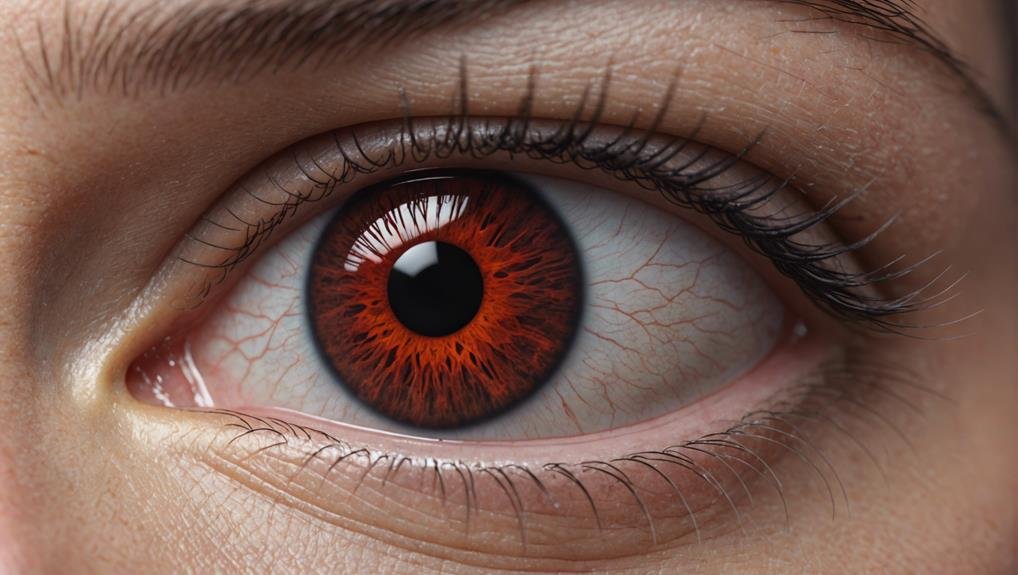Eyelid Woes: Signs, Causes, and Treatments Unveiled
Experience red, itchy, swollen eyelids with blepharitis? Manage it with warm cleanings, eye drops, and good hygiene. For ptosis causing droopy lids, seek medical help for Botox or surgery. Is blepharochalasis affecting your eyelid elasticity? Consider blepharoplasty for skin removal. Ectropion causing irritation? Surgery tightens the lid. If entropion rolls your lid inward, consult an ophthalmologist for treatment. Learn how to improve eyelid problems by uncovering signs, causes, and treatments for healthier eyes.
Key Takeaways
- Blepharitis causes red, itchy, swollen eyelids.
- Ptosis results from weakened eyelid muscles.
- Blepharochalasis correction involves surgical blepharoplasty.
- Ectropion leads to excessive tearing and redness.
- Entropion causes eye irritation and blurring.
Blepharitis: Symptoms and Treatments
Blepharitis, a common inflammation of the eyelids, presents with symptoms such as red, itchy, and swollen eyelids, along with red, watery eyes. It can be effectively managed with a combination of artificial tears, steroid eye drops, anti-dandruff shampoo, antibiotic eye drops, and warm washcloth cleaning.
For home remedies, warm compresses can help alleviate discomfort. Prevention includes maintaining good eyelid hygiene by gently washing the eyelids daily. Chronic management may require regular visits to an eye specialist for monitoring and adjustments to the treatment plan.
If symptoms persist or worsen, seeking specialist care is essential to prevent complications and maintain optimal eye health. Remember, proactive care is key to managing blepharitis effectively.
Ptosis: Causes and Treatment Options
When addressing ptosis, understanding the causes and available treatment options is crucial for effective management of this condition affecting the eyelids. Ptosis, or the sagging of upper eyelids due to weakened muscles, can be caused by various factors such as eye injuries, nervous system problems, or underlying diseases.
Non-invasive treatments may include a medical examination to identify the root cause, treating any underlying diseases, and waiting for the effects of temporary remedies like Botox injections to wear off. In cases where non-invasive methods are ineffective, surgical options for repair are available. The recovery process post-surgery typically involves following the surgeon's instructions diligently to ensure optimal healing.
Prevention tips may include early detection and treatment of any underlying conditions contributing to ptosis.
Blepharochalasis Correction: Surgery Overview
To correct blepharochalasis, a surgical procedure known as blepharoplasty is typically performed to address the eyelid skin's loss of elasticity and sagging, which can obstruct vision. This surgery involves removing excess skin, muscle, and sometimes fat from the upper and lower eyelids to create a smoother, more youthful appearance.
Recovery from blepharoplasty usually involves some swelling and bruising, which can be managed with cold compresses and prescribed medications. Patients are advised to avoid strenuous activities during the initial healing period.
Insurance coverage for blepharoplasty varies depending on the extent of visual obstruction caused by blepharochalasis. Some benefits may be available if the condition significantly impairs normal vision.
Ectropion: Symptoms and Surgical Solutions
If you're experiencing symptoms such as excessive tearing, redness, and irritation in your lower eyelid, you may be dealing with a condition known as Ectropion. Here are some key points to keep in mind about Ectropion:
- Symptoms: Excessive tearing, redness, irritation
- Treatment: Surgery to tighten lower eyelid and muscles
- Post-surgery care: Eye patch, antibiotic ointment
- Prevention strategies: Regular eye check-ups, protecting eyes from harsh environmental conditions
Patients who undergo surgery for Ectropion often experience improved eyelid function and reduced symptoms. Long-term outcomes are generally positive, with many patients reporting increased comfort and a better quality of life after corrective surgery. Proper post-surgery care and preventive measures play essential roles in maintaining excellent eye health and preventing future complications.
Entropion: Symptoms and Corrective Procedures
Entropion, a condition where the lower eyelid rolls inward toward the eye, can lead to symptoms such as eye irritation, tearing, and blurring. When experiencing these symptoms, it's important to consult with an ophthalmologist for proper evaluation and treatment.
Entropion surgery is often recommended to correct the eyelid rolling and alleviate discomfort. During the surgical procedure, a piece of the lower eyelid is removed, and the surrounding skin and muscles are tightened to restore the eyelid to its normal position. This corrective surgery aims to improve vision, reduce eye irritation, and prevent further complications associated with entropion.
If you suspect you have entropion or are experiencing persistent eye irritation, seek medical attention promptly for a proper diagnosis and treatment plan.
Conclusion
To wrap up, when faced with eyelid issues, it's crucial to address them promptly to maintain excellent eye health and comfort.
By understanding the signs and causes of conditions such as blepharitis, ptosis, blepharochalasis, ectropion, and entropion, you can explore the range of treatment options available.
Remember, taking proactive steps to care for your eyelids can help you see the world more clearly and comfortably.







